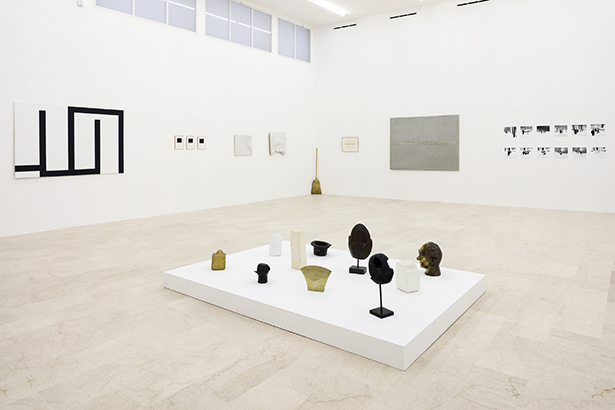Until May 27, 2017
P420
via Azzo Gardino, 9
40122 Bologna
Italy
Hours: Tuesday–Saturday 10:30am–1:30pm,
3–7:30pm
Curated by Danka Sosic and Zarko Vijatovic
“Gorgona was a harmonious community; in the ideological world it was concerned by emptiness (element present in all serious matters) without the ultimate goal, perhaps without purpose.”
Josip Vaništa: New Notes, Gallery Kratis Edition, Zagreb, 2007
Gorgona was a non-conventional art group that was formed in the late ’50s in Zagreb. The painters Julije Knifer, Marijan Jevšovar, Đuro Seder and Josip Vaništa used to get together regularly with sculptor Ivan Kožaric, architect Miljenko Horvat and art historians Dimitrije Bašičević Mangelos, Matko Meštrović and Radoslav Putar. This informal group was on the fringe of the art scene in former Yugoslavia, in voluntary isolation. Its members never issued a manifesto, nor collective goals. During the ’60s, through their meetings, exchanges of ideas, and intellectual and spiritual ties, they began to create collective works and actions. Between 1961 and 1966 they published the anti-magazine Gorgona, each issue was designed by an artist as a work in its own right. They organized collective and solo-exhibitions at an alternative exhibition space, the framing shop Salon Šira, that they called Studio G.
The group members had strong connections with other avant-garde artists like Lucio Fontana, Enzo Mari, Robert Rauschenberg, Harold Pinter, François Morellet, and Yves Klein. Dieter Roth and Vasarely both published an issue of the anti-magazine Gorgona, and Piero Manzoni created three proposals entitled Tavole di accertamento, though he never produced an issue of the magazine.
Gorgona magazine has ceased publication in 1966 after eleven issues, but Gorgona has not completely disappeared. It manifested itself through the “Postgorgona” and then “Post Scriptum” issues, which are also covered by the show.
For the proto-conceptual practice of Gorgona a “Gorgonic spirit” is evoked, i.e. a nihilist and philosophical mental state in which the sole objective was pursuit of total artistic and intellectual freedom, where ample space was set aside for recurring themes such as repetition, the void, death, time, denial, destruction, but also formal considerations like the line, the pure form, the circle, black and white.
Moreover, the dematerialization of work of art brought them in the sphere of action. Through outings, assemblies and meetings they intended to surpass and transcend the materiality of work of art.
Accompanied by a vast archive of works, photographs, catalogues and material of the studio G., the exhibition Gorgona, Postgorgona is organized around the main themes addressed by Gorgona, attempting to reconstruct the particular spirit of the group and a complex artistic practice that included multiple group actions covered by extensive photographic documentation gathered together with drawings, paintings and sculptures, undertaken individually, but shared within the group members.
